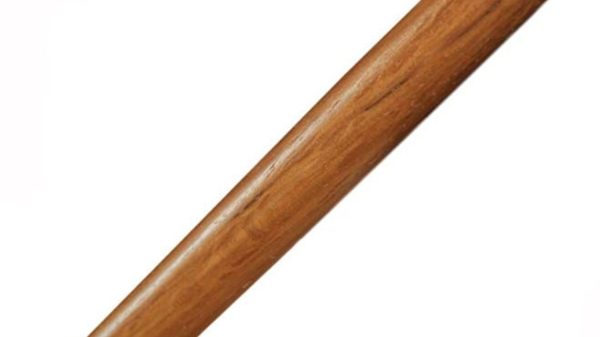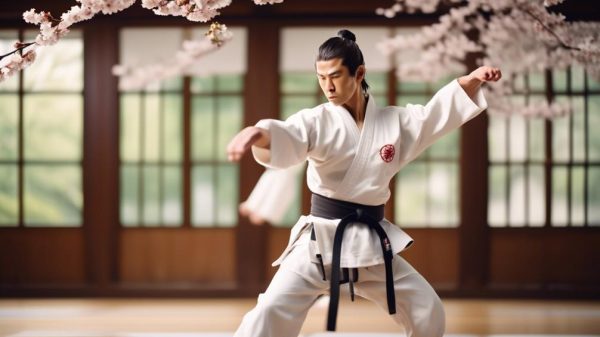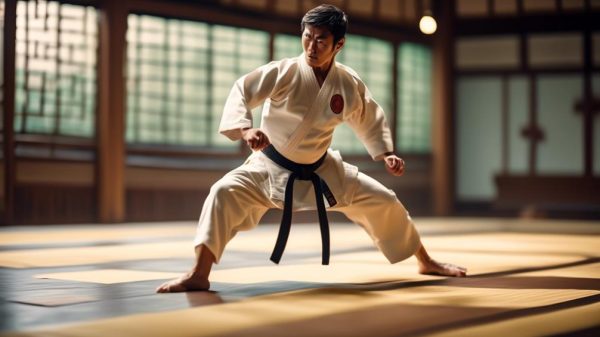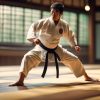Martial artists pound kicking bags in training to better strikes. Unlike pads held by partners, bags allow full-forced repetition.
Attacking the heavy bag with a variety of barefoot/shoed kicks or knees without worry of injury builds striking tools if done correctly.
Focusing kicks on specific sections trains accuracy. Combinations stress stamina by not stopping for minutes, envisioning enemy attacks in between.
Checking kicks into bags also hardens shins if done gradually over time. Pivoting builds mobility to unload strikes from angles. Proper form prevents harm.
Kicking bag workout intensity skyrockets cardio, strength and technique if approach thoughtfully. Consistency develops weapons while torching calories!
Understanding Kicking Bag Basics
Before you embark on a vigorous training session with a kicking bag, it’s essential to understand the different types available and how they can benefit your practice.
Free-standing bags offer flexibility and portability, making them ideal for enhancing reflexes and footwork. On the other hand, heavy bags are crucial for developing power and endurance, allowing you to practice high-impact strikes with resistance.
Additionally, focus mitts play a vital role in refining precision and speed in your strikes.
Engaging in bag drills not only improves your martial arts techniques and training but also enhances overall strength and technique.
To prevent injuries and maximize the benefits, always use proper technique. Begin with a thorough warm-up to prepare your muscles, maintain balance to prevent unnecessary strain, and gradually increase the intensity of your strikes.
For optimal training results, prioritize the quality of your technique over the quantity of strikes. Incorporate dynamic footwork and combine different strikes to simulate real-life scenarios.
It’s important to remember that mastery comes with practice and guidance. Seek out an experienced martial arts instructor and utilize online resources to refine your skills with kicking bags.
Essential Gear and Setup
Before beginning your kicking bag drills, it’s essential to select a bag that matches your skill level and the kicks you’ll be practicing.
Ensure you have ample space to move safely, and securely mount the bag to prevent any accidents.
Understanding the proper setup is just as important as mastering the technique itself. Neglecting this aspect can result in ineffective workouts or potential injury.
Choosing the Right Bag
Selecting the appropriate bag for your kicking drills depends on evaluating your specific training objectives and the available space.
If you’re focusing on power conditioning, a heavy bag may be the most suitable option, while a free-standing bag could be preferable for smaller areas or for practicing various martial arts techniques.
It’s important to make sure that the bag’s weight and material align with your requirements to facilitate the proper technique development with guidance from a qualified martial arts instructor.
- Heavy Bag: Ideal for Power Development and Conditioning
- Free-Standing Bag: Suited for Limited Space and Versatility
- Specialty Bags: Targeted Techniques
- Adjustable Bag: Suitable for Multiple Users and Training Styles
Your kicking bag is an essential tool in your martial arts training arsenal.
Choose wisely to ensure it can be used safely and effectively, aiding your progress towards mastery.
Tips for an Effective Kicking Bag Training Space
For an effective kicking bag training experience, it’s important to have ample space that allows for dynamic movement and a wide range of techniques.
Ensure your training area is free of obstacles and has a sturdy anchor for your kicking bag to enable full extension of punches and kicks.
Consider using mats or protective flooring to reduce the risk of injury and absorb impact. Good lighting and ventilation are essential for creating a conducive training environment.
In martial arts classes, focusing on technique is crucial. Collaborate with an instructor to refine your form, and always ensure that exercises are supervised to prevent injuries.
With the right setup, you can improve your mastery of martial arts techniques and exercises, ultimately enhancing your overall training experience.
Tips for Mounting and Supporting Your Kicking Bag
It’s crucial to ensure that your kicking bag is securely hung from a sturdy support system to prevent accidents and enhance the effectiveness of your training.
As a committed martial artist, it’s important to set up your training equipment correctly to avoid injuries.
Here are key considerations:
- Mounting Height: Hang the kicking bag at a height that suits your stature and the techniques you want to practice.
- Stable Fixtures: Use heavy-duty chains or wall brackets for a strong setup that can withstand the demands of martial arts training.
- Protective Measures: Employ padding and mats to protect your space and reduce the noise during your intense training sessions.
Regularly watching instructional videos can provide additional insights into optimizing your kicking bag setup for improved performance and safety.
Dynamic Stretching and Warm-Ups
Before you start training, it’s important to prepare your muscles for the explosive power you’ll need.
Incorporate essential movements like leg swings and walking lunges to improve flexibility and increase blood flow.
Tailoring your warm-up to the specific exercises ahead ensures that you’re ready and less prone to injury for optimal performance.
Benefits of Dynamic Stretching
The advantages of dynamic stretching are invaluable when preparing for martial arts activities.
This form of stretching actively involves your muscles, which helps improve flexibility and range of motion, essential for executing kicks and punches effectively.
Incorporating dynamic stretching into your martial arts conditioning program is vital for a few reasons:
- Injury Prevention: By warming up your body, dynamic stretching reduces the risk of strains and sprains.
- Performance Enhancement: It boosts muscle power and agility, crucial for executing precise techniques.
- Mental Preparation: Dynamic stretching sharpens focus and mental readiness, aligning your mind and body for peak performance.
Essential Warm-Up Movements
Get ready to kick-start your martial arts session with essential warm-up movements. Incorporate dynamic stretches like leg swings and arm circles to enhance flexibility and prevent injuries.
These movements are vital for priming your body and improving muscle performance and range of motion, setting the stage for the 82 diverse techniques you’ll execute on the Kicking Bag.
Focus on precise, fluid motions as you pivot into these warm-ups. They form the foundation of your arts training and play a crucial role in increasing blood flow, mentally and physically preparing you for mastery.
A thorough warm-up is the bedrock of your session, ensuring your body is ready to meet the demands of rigorous Kicking Bag drills.
Pre-Kick Drills Preparation
Get ready to enhance your kicking skills with a tailored warm-up routine designed to prepare your body for the upcoming bag drills.
Before diving into your martial arts training, establish a pre-kick drills preparation plan to set the stage for success.
Here’s what you need to do:
- Start by performing leg swings, high knees, and hip rotations on your practice mats to improve flexibility and prepare your muscles.
- Incorporate light cardio activities such as jogging or jumping jacks to elevate your heart rate and get your body ready for intense physical exertion.
- Focus on exercises that promote joint mobility to ensure a full range of motion, which is crucial for powerful kicks.
Always ensure that a trained instructor supervises this routine to provide expert guidance, maximizing your performance and minimizing the risk of injury.
Fundamental Kicking Techniques
Mastering fundamental kicking techniques requires a focus on maintaining a stable stance and balanced posture while striking the kicking bag.
Proper balance is crucial for delivering powerful kicks without losing footing. Using kicking shoes can enhance grip and protect the feet, enabling more rigorous sessions with striking bags.
Precision is essential in executing the technique, aiming for both accuracy and force.
The overall goal is complete martial arts conditioning, emphasizing deliberate and controlled movements.
Utilizing kicking shields for partner training can aid in refining aim and control.
Here is a concise overview to help visualize key aspects of the training regimen:
| Equipment | Purpose | Tips |
|---|---|---|
| Kicking Bag | Develop power and technique | Strike at various angles and heights |
| Kicking Shoes | Protect feet, improve grip | Choose supportive and flexible shoes |
| Striking Bags | Simulate real combat scenarios | Incorporate movement, vary strikes |
| Kicking Shields | Partner training, precision | Focus on technique over brute strength |
Each session should involve pushing personal limits while maintaining integrity of form. Training with intention will help make the execution of kicks second nature.
Advanced Kicking Combinations
Building on the foundation of fundamental kicking techniques, you’ll now elevate your training with advanced kicking combinations that fuse multiple kicks into swift, fluid sequences.
These dynamic combinations will challenge your balance, flexibility, and precision, pushing you to master the art of connecting various kicks with seamless transitions.
To enhance your prowess, consider these strategic practices:
- Integrate Arts Training Equipment: Use practice mats for safety and precision, and heavy bags to fine-tune power and control in your kicks.
- Leverage Educational Resources: Books are great tools and videos can significantly supplement the instruction given by a trained martial arts instructor.
- Continuous Practice and Analysis: Regularly review your techniques to reinforce and supplement the information you’ve learned, ensuring steady progress.
As you drill these advanced kicking combinations, focus on the mechanics of each movement.
Your goal is to execute each kick with maximum efficiency while maintaining a rhythm that makes it difficult for opponents to predict your next move.
Remember, a trained martial arts instructor is invaluable for personalized feedback, helping you refine your technique and strategy.
Now, hit the mats and let your advanced kicking combinations become a testament to your dedication and skill.
Tips for Improving Power and Speed in Martial Arts Training
To enhance your power and speed in martial arts, it’s essential to seamlessly combine agile footwork with precise strikes on the kicking bag.
As a martial arts enthusiast, you recognize that power transcends mere strength; it hinges on refined technique, bolstered by accuracy and agility.
Achieving this demands versatility in the height and angle of your strikes, honing your precision and perfecting your execution.
Integrate footwork into your training routine on the practice mats. Utilize a variety of strikes including kicks, punches, and combinations on the speed bag to cultivate fluidity and amplify your power.
It’s not just about hitting hard; it’s about moving intelligently. Fluidly maneuver around the kicking bag, weave through patterns, and ensure each strike counts.
As you progress, intensify your training for power and speed. Increase the pace while maintaining flawless form.
Let the training equipment, such as the speed bag and kicking bag, complement and reinforce the lessons being taught.
Remember, true mastery lies in the harmonious fusion of speed, power, and technique. Your objective is to make each strike on the kicking bag a testament to your growing expertise.
Measuring Progress and Adjustments
As you work on improving your strikes and footwork, it’s important to regularly assess your progress and adjust your training approach accordingly.
Setting specific goals and benchmarks is crucial for effectively measuring your progress. Here are some strategies to help you do that:
- Monitor Key Performance Metrics: Keep track of improvements in your speed, power, accuracy, and technique. Use these metrics to set clear goals, such as increasing your kicking speed or improving striking precision.
- Incorporate Diverse Drills: Keep your training challenging by modifying techniques, increasing intensity, or changing strike angles. This prevents you from reaching a plateau and helps you continue to progress.
- Seek Guidance from Experts: Consult with a martial arts instructor to receive feedback on your performance, correct any mistakes, and get advice on making necessary adjustments to your training.
How Do You Kick a Punching Bag?
When kicking a punching bag, it’s important to focus on refining your technique to improve your balance, power, and flexibility.
Concentrate on mastering fundamental footwork, practicing a variety of kick styles, and prioritizing injury prevention to achieve mastery in this skill.
How Do You Practice Muay Thai on a Heavy Bag?
When practicing Muay Thai on a heavy bag, incorporate elbow techniques, clinch work, and timing teeps with striking combinations.
Improve defensive maneuvers through footwork drills and enhance endurance with conditioning routines.









